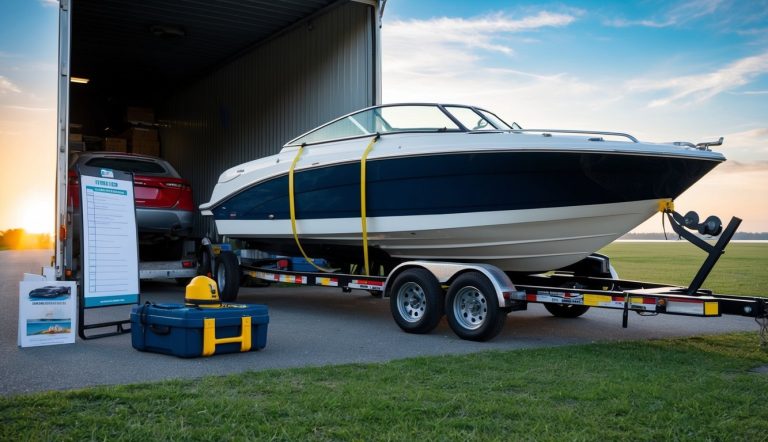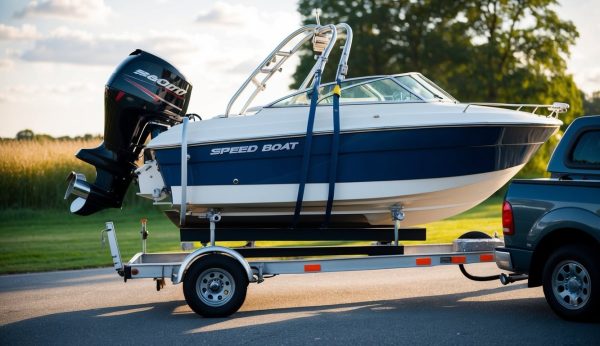Moving a speed boat from one location to another requires careful planning and attention to detail. Whether you’re shipping your boat across the country or simply towing it to a new marina, proper preparation ensures your vessel arrives safely and in good condition. A comprehensive checklist helps prevent damage, reduces stress, and saves time and money during the relocation process.
Boat transportation involves several important considerations including securing loose items, protecting delicate components, and ensuring all paperwork is in order. Taking the time to prepare your speed boat properly before transport will give you peace of mind and help avoid unexpected issues. The boat transportation checklist serves as your roadmap for a smooth relocation experience.
Check local and state regulations for boat transport
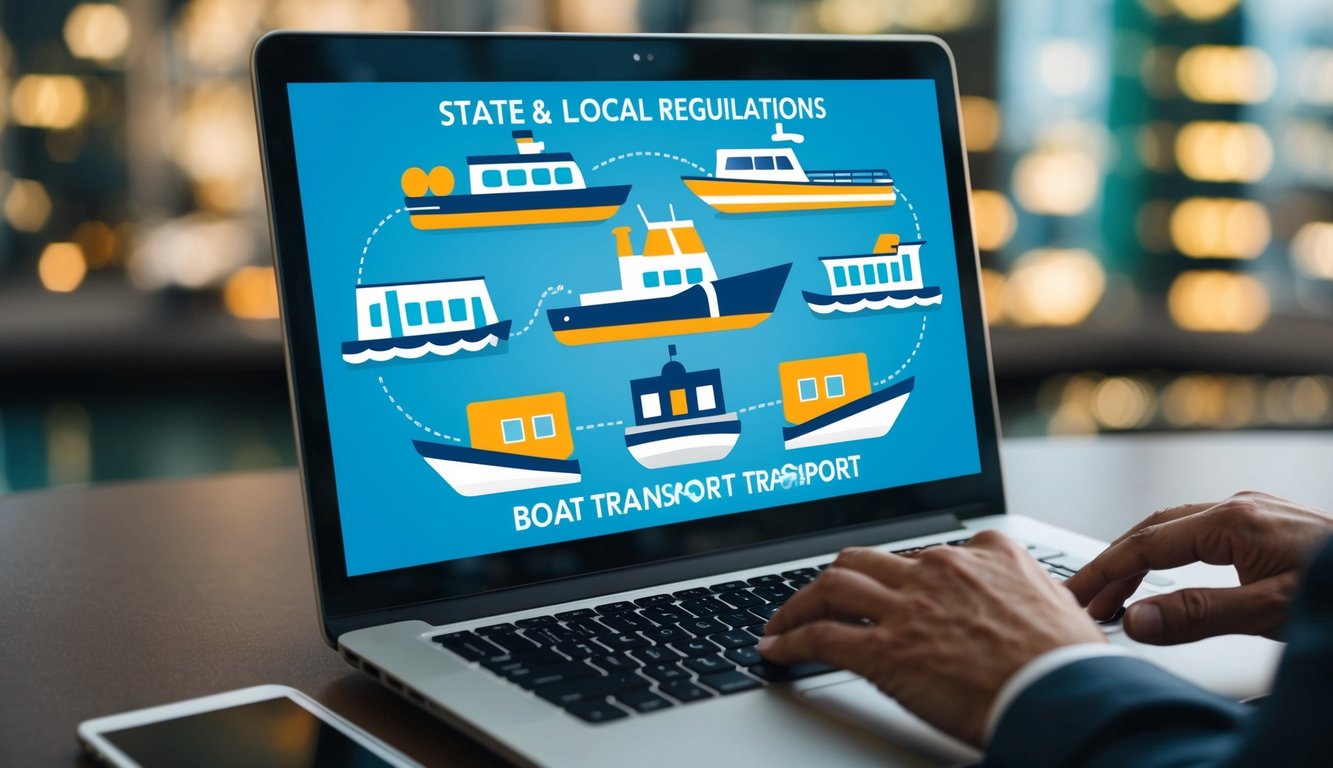
- Before moving your speedboat, you need to understand the legal requirements for transport. Different states have different rules about boat transportation.
- Make sure to check if your boat needs a USDOT Number for transport. This is especially important for larger vessels that may be considered oversized loads.
- Be aware that when moving your boat to a new state, your Certificate of Number (registration) typically remains valid for 60 days. You should check with your state boating authority for specific registration requirements.
- Local laws and regulations for boat transport vary from state to state. This includes rules about escort vehicles, travel times, and route restrictions.
- Some states require special permits for oversized boats. These permits often have time limitations and specified routes you must follow.
- If you’re using a transport company, verify they have proper licensing and insurance. Ask to see their Motor Carrier Number and commercial liability insurance documentation.
- Always research the requirements for both your departure and destination states. This prevents delays and potential legal issues during your speedboat relocation.
Disconnect and secure the battery
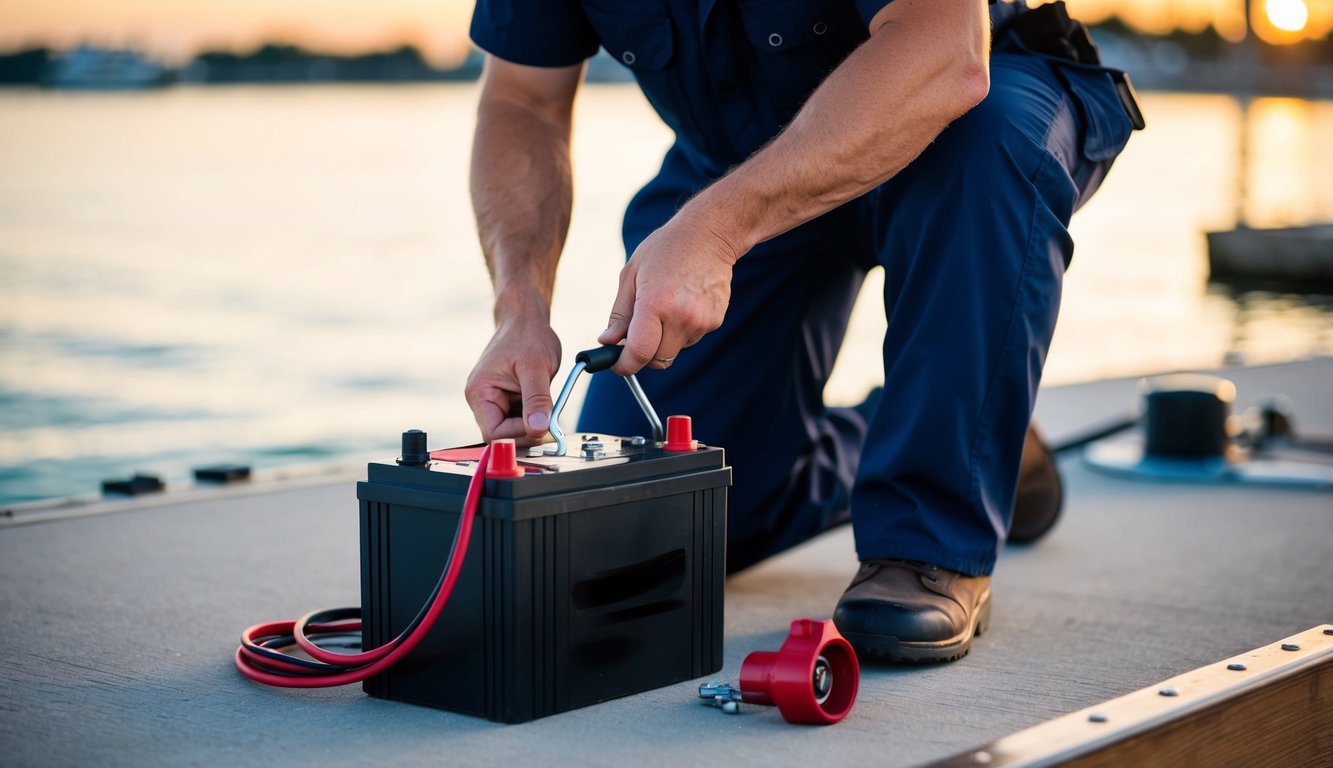
- Properly disconnecting and securing your boat’s battery is a crucial step when relocating your speed boat. This prevents electrical damage and potential safety hazards during transport.
- Begin by turning off all electrical systems on your boat. Then disconnect the negative terminal first, followed by the positive terminal. This order is important for safety reasons.
- Clean the terminals and cable ends before storage to prevent corrosion. Use a wire brush to remove any buildup on both the terminals and connectors.
- Make sure your battery is secured in a battery box or frame that’s firmly mounted to the boat. Loose batteries can cause damage or create dangerous situations during transport.
- Consider using stainless steel lock nuts instead of wing nuts to secure terminal connections. This provides better security during the move.
- For boats with dual battery systems, use the marine battery switch to disconnect both batteries. Turn the dial to the “off” position before beginning the disconnection process.
- Remember to stow all disconnected cables properly to prevent damage or accidental reconnection during transport.
Inspect the hull for damage or cracks
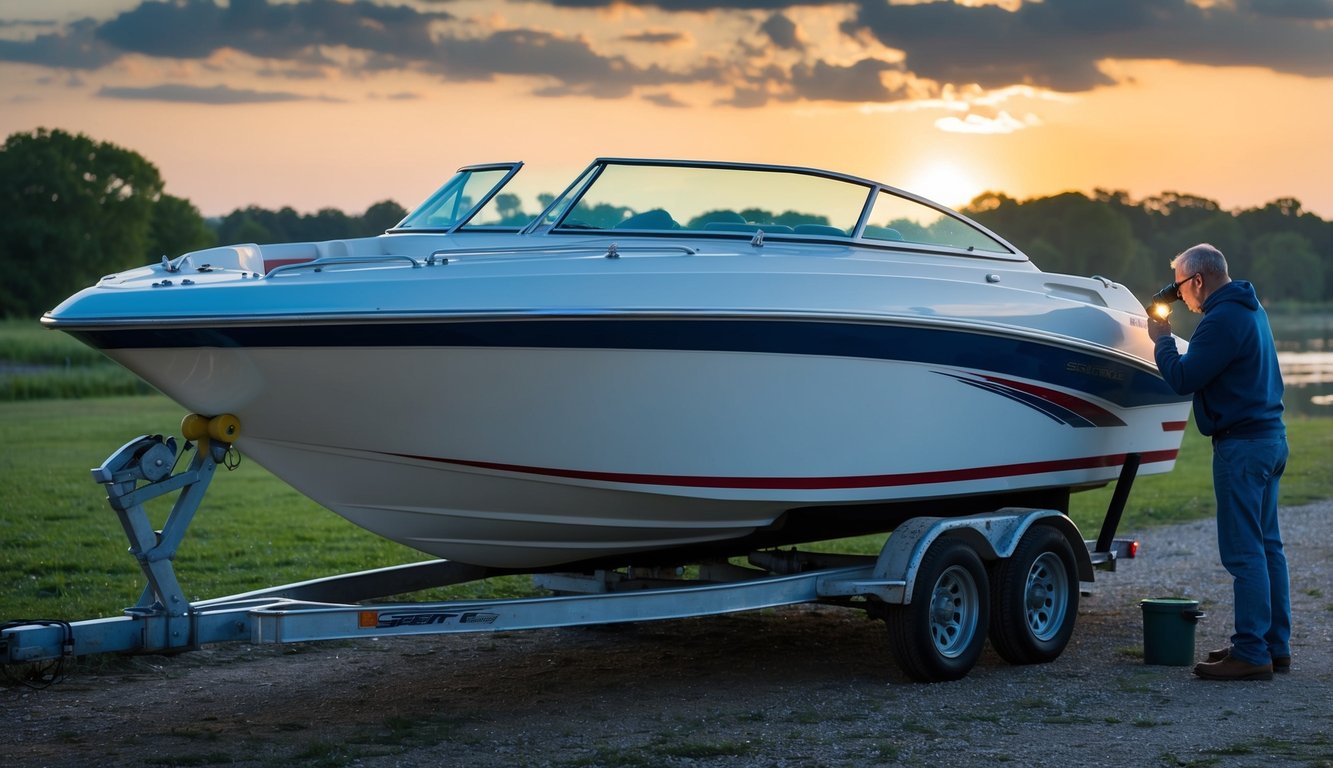
- Before transporting your speed boat, you need to check the hull carefully. Look for any visible damage or stress cracks that could worsen during transit. These issues might seem small now but can become serious problems later.
- Run your hand along the hull’s surface to feel for irregularities. Pay special attention to areas near the keel, chines, and transom as these spots often experience the most stress. Small hairline cracks can be hard to see but easy to feel.
- Check that all cleats and hull fittings are tight and secure. Loose hardware could come off during transport, causing damage or creating safety hazards on the road.
- Look for blisters or damage that might compromise the hull’s integrity. Document any existing damage with photos before transport to protect yourself from claims that weren’t your fault.
- Make sure to examine the hull and bilge for cracks and leaks. Water presence inside the boat often indicates hull problems that need attention before moving your vessel.
- If you find significant damage, consult with a marine professional before transport. Some issues require repair before the boat can be safely relocated.
Secure all loose items inside the boat
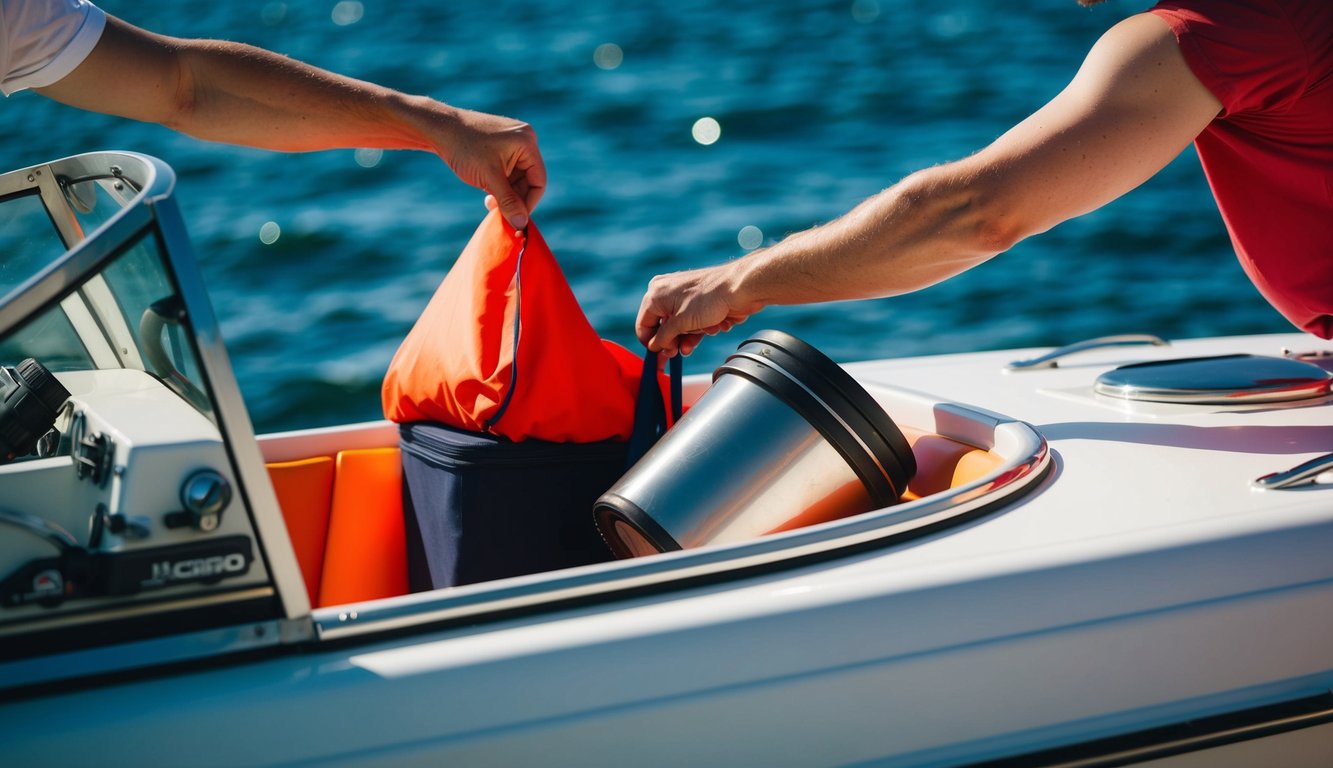
- When preparing your speedboat for transport, securing loose items is a critical step. Any unsecured objects can become dangerous projectiles during transit, potentially causing damage to your boat’s interior or exterior.
- Start by removing all personal belongings such as life jackets, towels, and electronics. These items should be transported separately to prevent loss or damage during the move.
- Next, check all storage compartments and cabins. Secure or remove anything that could shift during transport. This includes cushions, fishing gear, and navigational equipment.
- Don’t forget about smaller items that might be overlooked. Secure loose wires, knobs, and any detachable components that might come loose from vibration during transport.
- For items that must remain on board, use bungee cords, straps, or marine-grade tape to hold them firmly in place. Double-check that all cabinet doors and drawers are properly latched or taped shut.
- Pay special attention to valuable electronics. GPS units, radios, and depth finders should ideally be removed or extremely well-secured to prevent damage.
- Safety precautions like securing all loose items will ensure your speedboat arrives at its destination in the same condition it left. This simple step can save you significant repair costs.
Check and secure the trailer’s wiring and lights
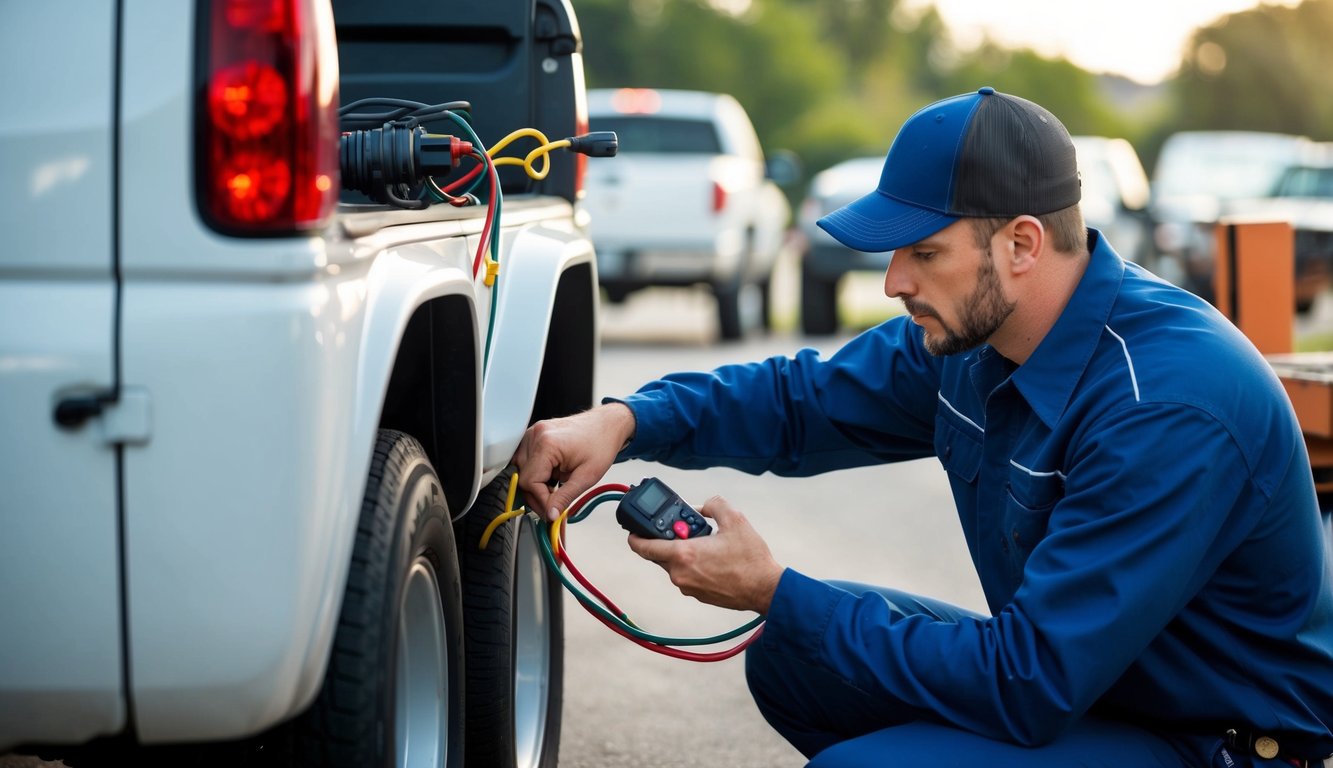
- Before hitting the road with your speedboat, always check that all trailer lights are working properly. Trailer lights often fail, so verify that tail lights, brake lights, turn signals, and marker lights function correctly.
- Inspect the connection between your tow vehicle and trailer. Make sure the plug is securely inserted and free from corrosion or damage. Some boaters create removable light boards mounted on wood, metal, or composite material for better protection.
- Remember to disconnect the trailer lights before backing into the water. This prevents electrical shorts when the lights become submerged. If your trailer has a tilting bed, keep it in the up position during this process.
- Check for any signs of wire damage along the trailer frame. Look for fraying, exposed wires, or loose connections that could cause lighting failures. Secure any loose wires with appropriate clips or ties.
- Verify that all wiring harness connectors are properly attached. Also check for blown fuses in your tow vehicle, as these can prevent your trailer lights from working correctly.
Remove the drain plug to prevent water buildup
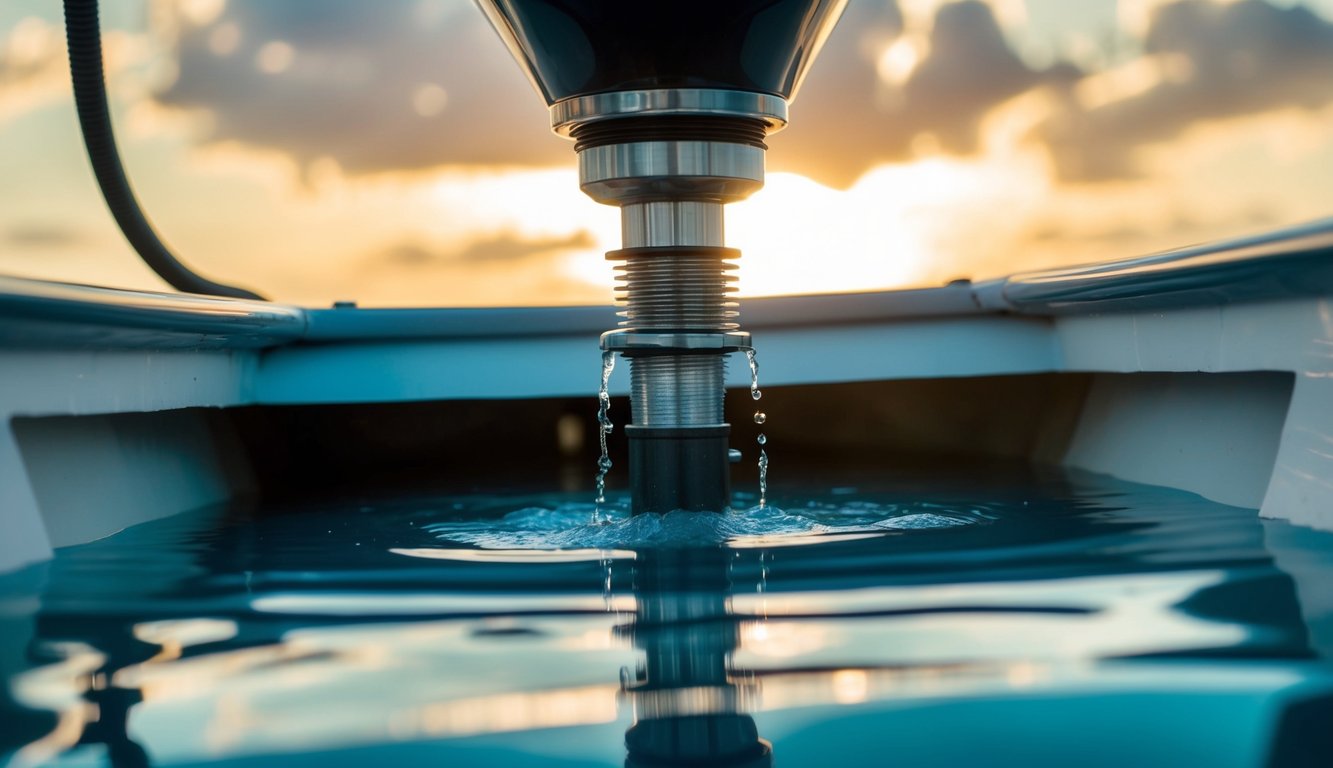
- When transporting your speed boat, always remove the drain plug. This simple step is crucial for preventing water damage and maintaining your boat’s condition.
- After loading your boat onto the trailer, you should pull the drain plug to let any water escape. It’s normal to see a constant stream for 20-30 seconds, which can amount to several gallons of water.
- Removing the plug serves multiple purposes during transport and storage. If rain or other moisture gets into your boat while it’s on the trailer, the open drain allows this water to flow out rather than collecting in the hull.
- For longer storage periods, keeping the drain plug out is equally important. This practice allows any precipitation to drain freely and prevents water accumulation that could cause damage.
- Remember to store your drain plug in a consistent location where you won’t forget it. Many boat owners attach it to the ignition key or steering wheel as a reminder.
- Just don’t forget the most crucial step – replacing the plug before your next launch!
Verify cargo and commercial liability insurance

- When shipping your speedboat, always check that your motor carrier has proper insurance coverage. This step protects your investment during transport and is legally required.
- Motor carriers must have cargo and commercial liability insurance to operate legally. Cargo insurance specifically covers your boat if it’s damaged during transit.
- Ask to see the carrier’s insurance certificates before signing any contracts. You should verify both the policy numbers and expiration dates to ensure they’re active during your transport dates.
- For added security, confirm that the carrier has a Motor Carrier Number and USDOT Number. These registrations indicate the company meets federal standards.
- The insurance policy should include an MCS-90 endorsement if it’s a federally registered carrier. This endorsement is attached to liability insurance policies as required by federal regulations.
- Don’t hesitate to call the insurance company directly to verify coverage. This extra step takes just minutes but can save you significant trouble later.
- Request documentation of all verified insurance information for your records. Keep these documents until your boat arrives safely at its destination.
Lower and secure antennas for transport
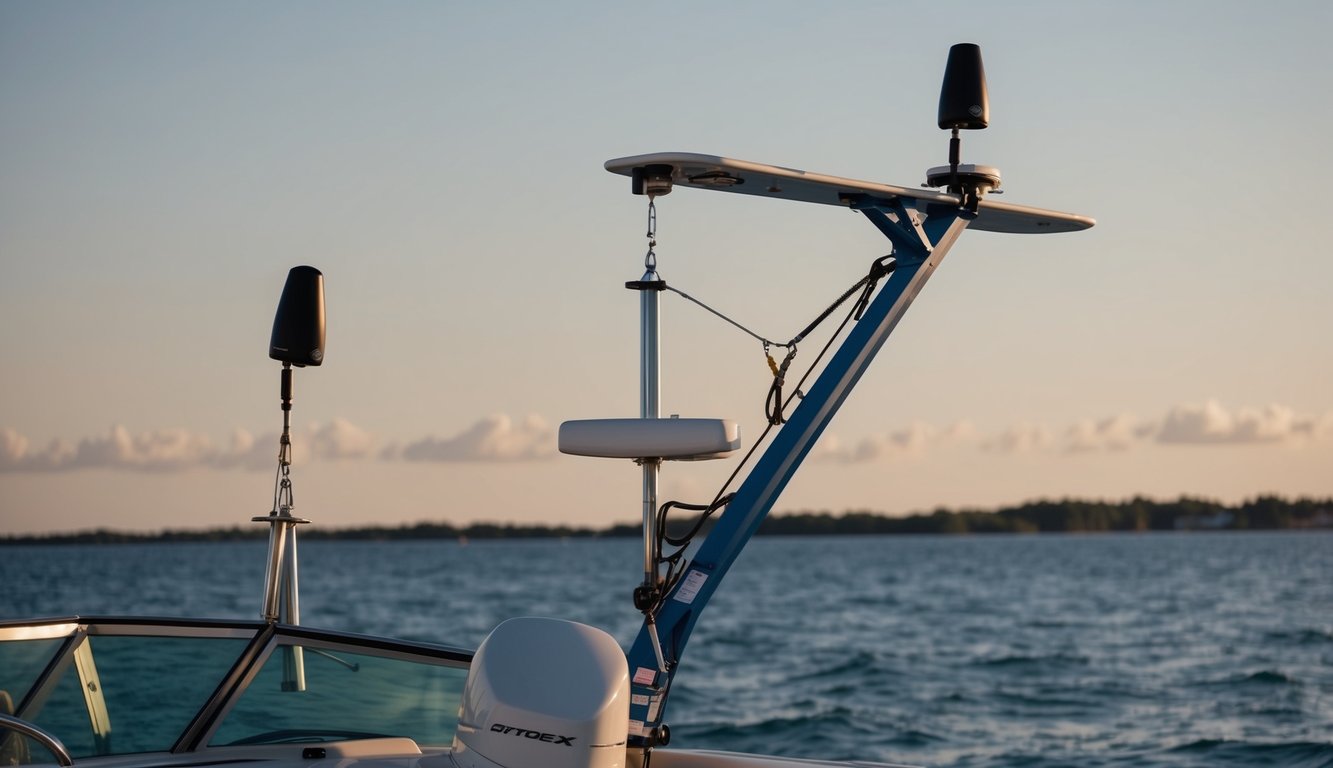
- When preparing your speed boat for transport, properly handling antennas is crucial for safe delivery. Antennas should be removed or lowered to prevent damage and avoid adding unnecessary height during transport.
- Start by identifying all antennas on your boat. This includes VHF radio antennas, GPS antennas, and satellite radio receivers. Most antennas can be unscrewed from their base or folded down.
- For removable antennas, carefully unscrew them and store in padded containers. Label each antenna and its corresponding location to make reinstallation easier. Keep these containers in a safe place separate from the boat.
- If your antennas cannot be removed, secure them in their lowest position. Use cable ties or soft straps to hold them firmly in place. Avoid using materials that could scratch or damage the antenna surface.
- Wrap antennas with protective material like bubble wrap or foam if they remain on the boat. This provides extra protection against road vibration and weather.
- Remember to document the original position and configuration of your antennas. Take photos before removal to help with reinstallation once your boat reaches its destination.
Service the steering and throttle systems
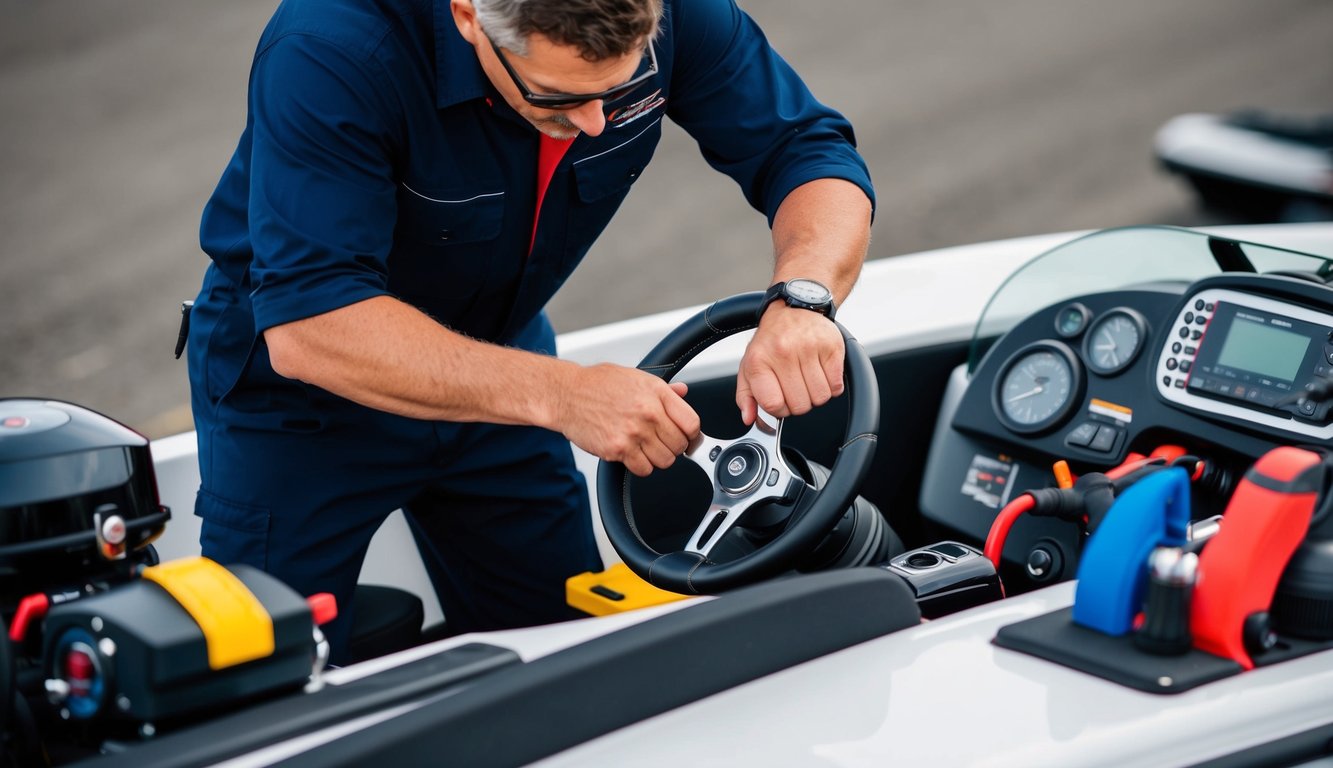
- Before relocating your speed boat, it’s crucial to check the steering and throttle systems. These components are essential for safe operation and control of your vessel.
- Begin by inspecting the steering cables for any signs of wear, corrosion, or damage. Make sure all connections are tight and secure. Power steering fluid levels should be checked and topped up if necessary.
- Test the steering by turning the wheel in both directions. The movement should be smooth with no sticking or resistance. If you notice any problems, have them fixed before transport.
- For the throttle system, check all cables and linkages for proper operation. The throttle should move freely without catching or binding. Clean any visible dirt or debris that might affect performance.
- Ask a professional to walk you through these systems if you’re unsure about what to look for. They can help identify potential issues that might worsen during transport.
- For boats capable of speeds over 50 mph, pay special attention to the steering stability. Dual-cable steering systems are recommended for these high-performance vessels.
- Document the current condition of these systems with photos. This will help you verify nothing changed during the move.
Confirm the boat’s accessibility for pickup
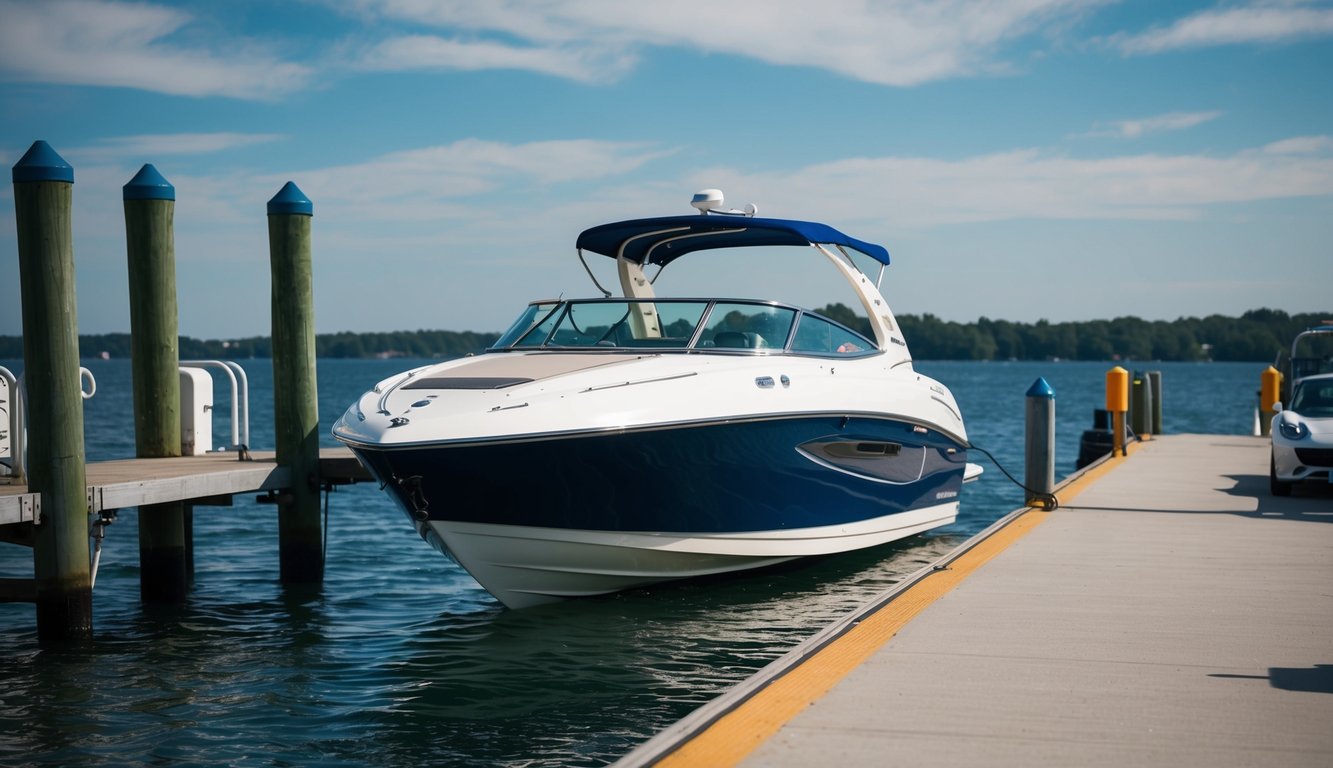
- Before scheduling your speed boat’s relocation, you need to ensure it’s accessible for the transport team. Proper access is crucial for a smooth pickup process.
- For residential pickups, your boat must have at least 60 feet of straight access in front of the bow. This allows the transport vehicle enough space to align properly with your vessel without complicated maneuvering.
- Your boat should be blocked with a minimum of 36 inches of space between the sides and the ground. This clearance is necessary for the transport equipment to properly position under the hull.
- Check for any overhead obstacles like tree branches, power lines, or roof overhangs that might interfere with the lifting process. Remember that the transport vehicle will need additional height clearance above your boat.
- Ensure all loose gear is properly stowed before the transport team arrives. This prevents damage to both your belongings and the vessel during the moving process.
- If your boat is currently in water, locate a suitable boat ramp nearby that can accommodate both your vessel and the transport vehicle. Water pickups have different requirements than land-based relocations.
